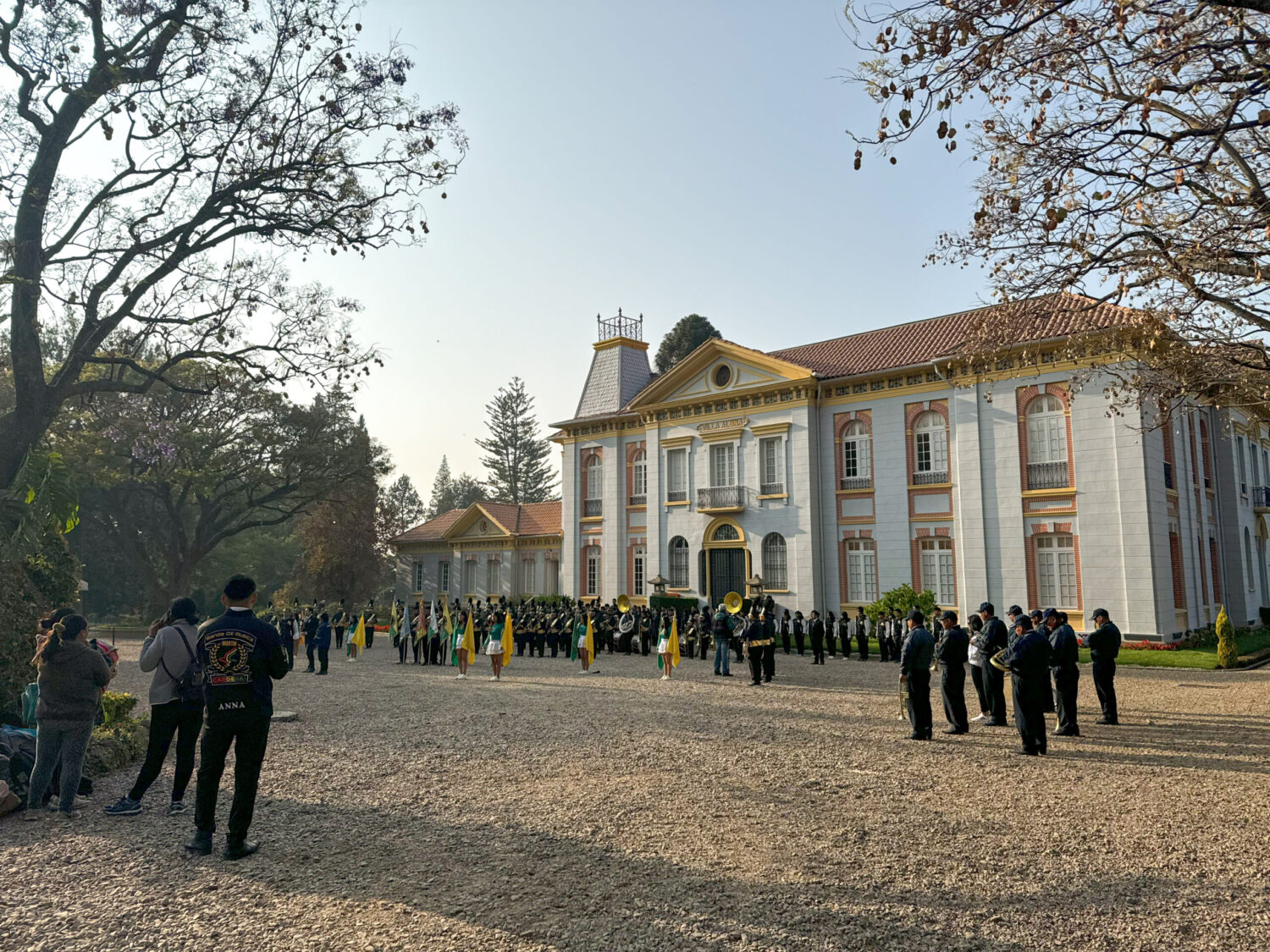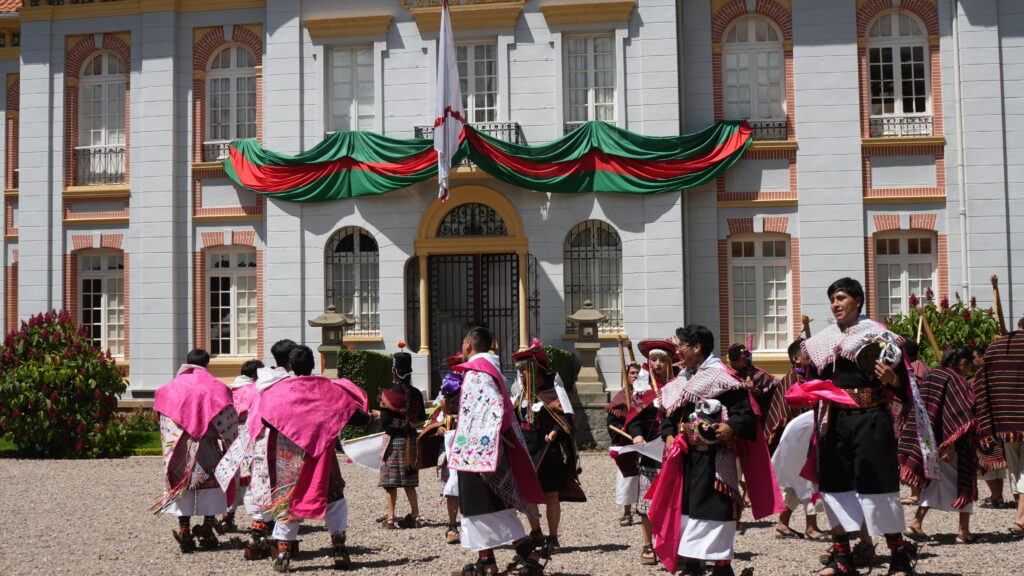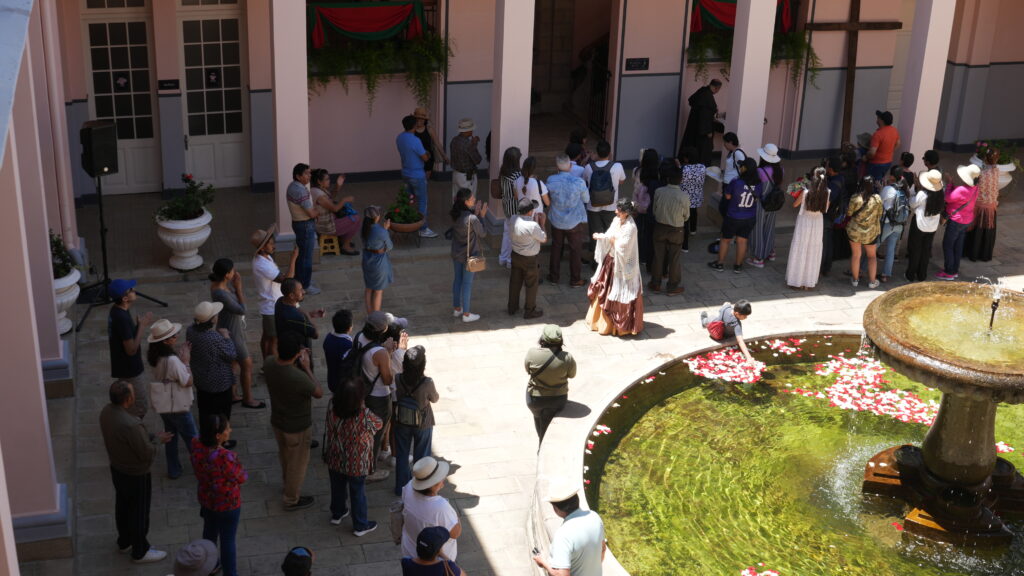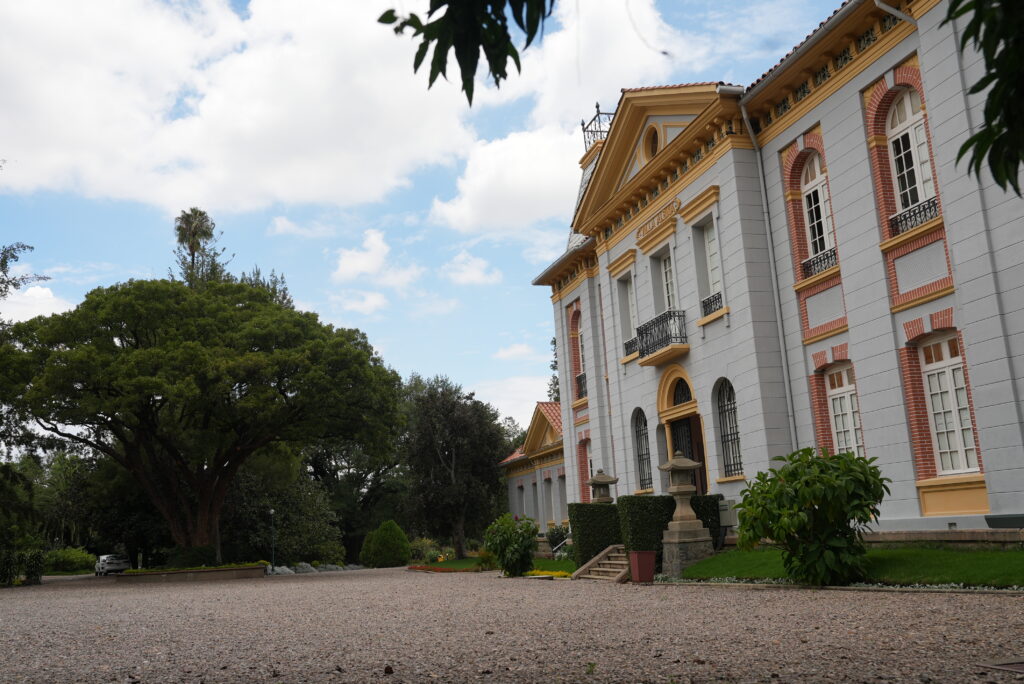
Nestled in the heart of Hacienda Pairumani, Villa Albina embodies a promise of love turned cultural heritage. Built by Simón I. Patiño for his wife, this elegant residence is now a living museum open to all. With its architectural beauty, family legacy and cultural programme, the villa offers a unique immersion into Bolivian history and the founding values of the Patiño Foundation.

Built in Pairumani in 1917, Villa Albina embodies the union of a personal love story and a visionary project. Located 16 kilometres from Cochabamba, at the foot of the Tunari mountain range, the house was commissioned by Simón I. Patiño in honour of his wife, Albina Rodríguez. The idea came from a promise made under century-old olive trees during a simple picnic. Albina, enchanted by the place, dreamed of living there. Simón kept his word: he bought the land and built a villa worthy of his devotion.
Designed by French architect José Turigas and later modified by Max Franz, Villa Albina reflects the eclectic style favoured by early 20th-century elites. It blends elements inspired by European historicist architecture with local references. The building is organised around a square central patio bordered by luminous galleries. A stone fountain stands at its centre, evoking Mediterranean aesthetics. The structure uses noble materials: marble, fine woods, ornaments imported from Europe — all underscoring the sober elegance of the home.
Though its appearance evokes grand European residences, the villa is anchored in the Andean landscape. This cultural fusion reflects Patiño’s openness and his wish to bridge Bolivian heritage with international influences.
Around Villa Albina, Simón I. Patiño developed a true model agricultural town. Hacienda Pairumani became a regional hub, combining innovation, labour and social services. He installed a modern dairy farm, housing for workers, a school for their children and a medical post. A stone dam and an artificial lagoon — named San Francisco — provided electricity and irrigation. This comprehensive vision made Pairumani a place that was simultaneously agricultural, residential and socially progressive.

Today, Villa Albina is open to the public under the name Casa Museo Villa Albina. It offers immersion in the world of the Patiño family and the lifestyle of an era shaped by the economic and social upheavals of the 20th century. Visitors can explore richly decorated rooms, leisure spaces, personal items and carefully preserved period furniture.
The villa also hosts temporary exhibitions that highlight different aspects of Bolivian culture. Its regular opening enables both heritage preservation and cultural outreach, keeping the site vibrant and accessible.
The gardens surrounding the villa, designed by landscape architect Prosper Remy, are an integral part of the experience. Rich in native and imported plant species, they feature statues, fountains and walkways ideal for strolling. This blend of cultivated nature and biodiversity enhances the peaceful atmosphere of the site. It reflects the care taken with details, beauty and the balance between architecture and environment.
Villa Albina is more than just a museum. It is also an active cultural centre. It offers educational workshops for local schools, public art events and hosts lectures on Bolivian history and society. It also serves as a research site to study the country’s economic and social transformations through the lens of the Patiño family.

By attracting both national and international visitors, Villa Albina helps strengthen the bond between heritage and community. It stimulates the local economy, creates learning opportunities, and honours collective history through a personal site. Managed by the Simón I. Patiño Foundation, it continues the Foundation’s mission of transmission, remembrance and innovation.
1917 – Beginning of Villa Albina’s construction
1917
Thousands of visitors welcomed each year to the museum and gardens
1000
1,000 m² of built space, at the heart of a multi-hectare estate
1000
By supporting Villa Albina, you help preserve an emblematic site of Bolivian heritage. Each donation helps maintain the house, grow its cultural and educational activities, and open this memory-rich treasure to a wider public.